If you store your seeds well, they can last for several years. (There are a few exceptions, and some types of seeds like onions and allium will only last for about a year, but most types will last at least three years and some much longer than that).
One storage method that has taken the gardening world by storm these last few years is keeping seeds in photo storage boxes. These boxes work well for seed storage because they check all the boxes for recommended seed storage:
- Water-resistant
- Mostly airtight
- Smaller compartment boxes are sized right for seed packages
- Compartment boxes make organizing seed by categories easy
- Keeps all your seeds in one convenient carry case, easy to take in and out as needed for starting seedlings or direct sowing in the garden
- Stores easily in a dark closet or under a bed, etc.
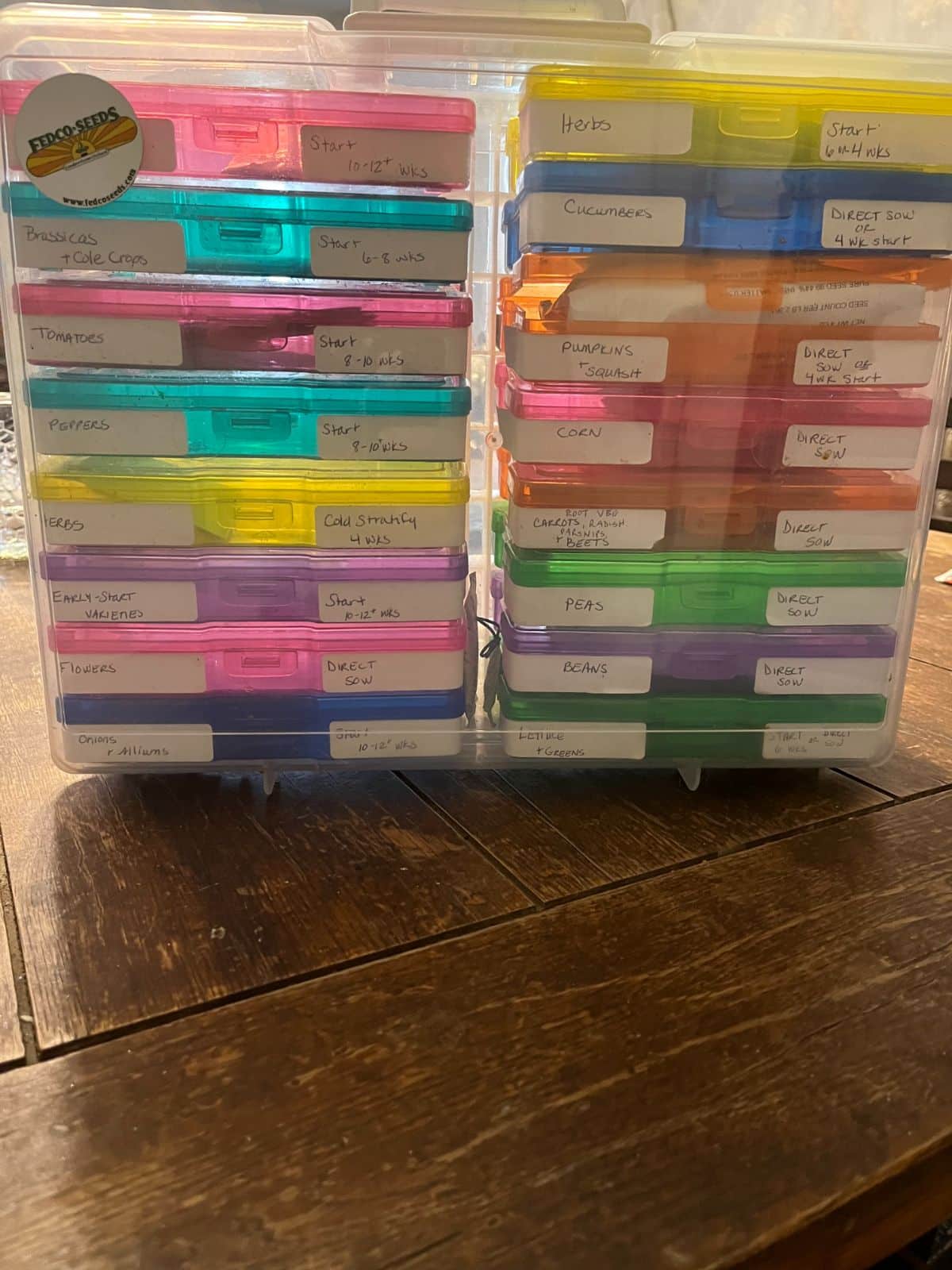
Jump to:
Tips for How to Arrange Your Seeds by Category
There are several ways to arrange and categorize your seeds. Choose the method that works best for you, or create your own method. These are some of the ways you might want to organize your seeds:
If you’re into seed starting, organize your seeds according to the date they need to be started. For example, you might have a box (or boxes) for each of the following:
- Seeds to start 10-12+ weeks before last frost/transplant date
- Seeds to start 6 to 8 weeks before last frost
- Seeds to start 4 weeks before last frost
- Seeds to direct sow
- Seeds for fall garden or succession planting
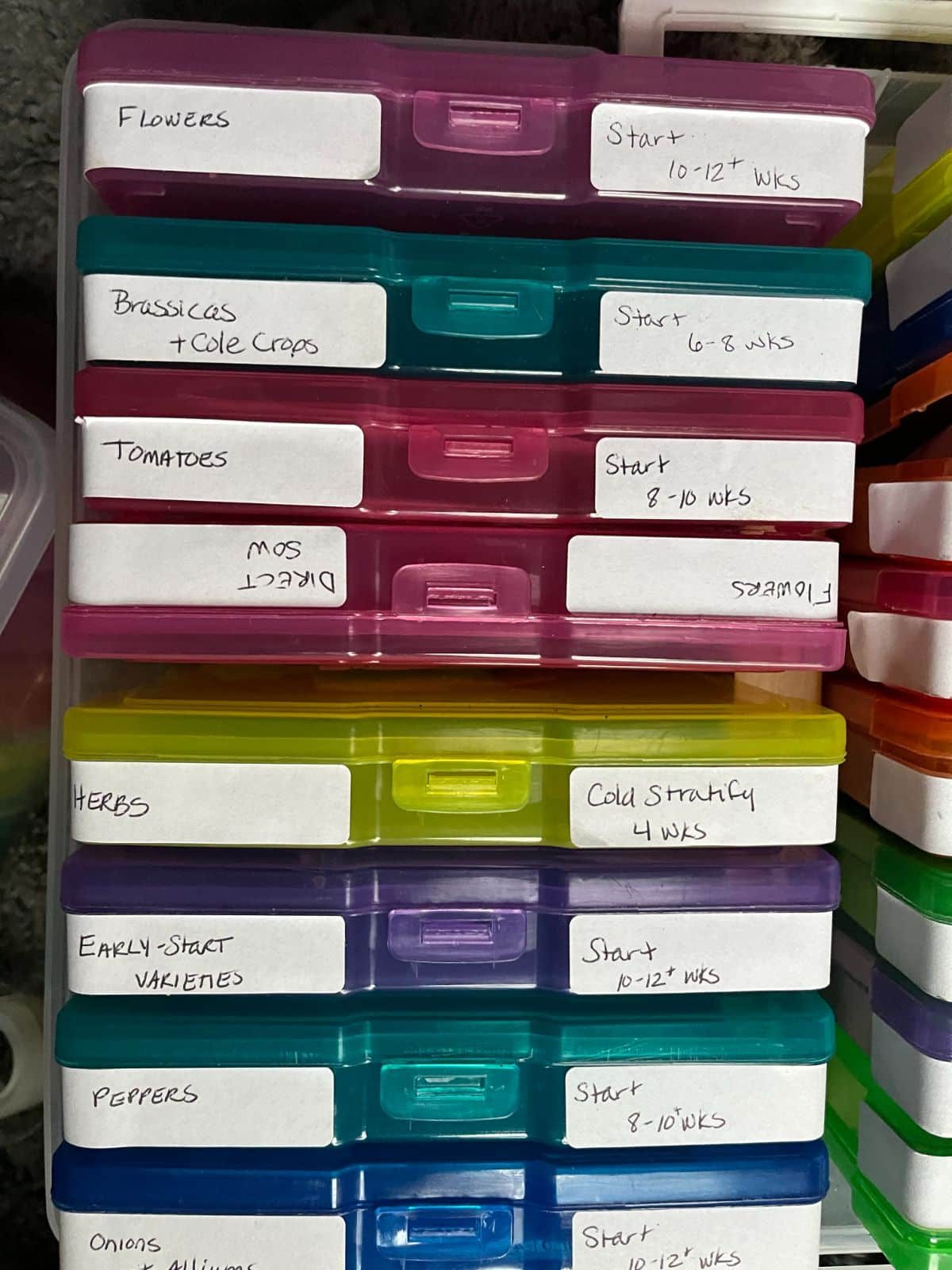
Organize your seeds by plant type. Some examples might include:
- Vegetables
- Herbs
- Flowers
- Perennials
You might want to break these down further into categories, like:
- Cole crops
- Early vegetables/frost-tolerant plants
- Tender annuals
- Ornamental plants
It can be helpful to group your seeds (especially vegetables) by type or description, like:
- Alliums
- Herbs
- Leafy greens and lettuce
- Brassicas and Cole crops
- Peas
- Beans
- Tomatoes
- Pepper varieties
- Root crops
- Squash and pumpkins
- Melons
- Flowers
If you like to companion plant, that could be a sensible way to organize your groupings. Group compatible plants together to make it easy to remember what can and cannot be planted together.
Or you might find it useful to group your seeds according to your planting schedule; for example, you might box your seeds similar to the list above and then organize the boxes in order for planting, from first in the ground to last.
Labelling Seed Compartment Containers

You’ll make your life easier if you label the boxes according to your organization and categories. Label the type of seed or category that is in each box. It also makes life easier if you label one side with when the seeds should be planted or started indoors, and/or whether they should be indoor starts or direct sown.
These are some good ways to label your storage boxes:
- Tape-style label makers
- File folder peel-and-stick labels
- Masking tape or painter's tape
- Permanent markers
Bonus Tips for Seed Moisture Control
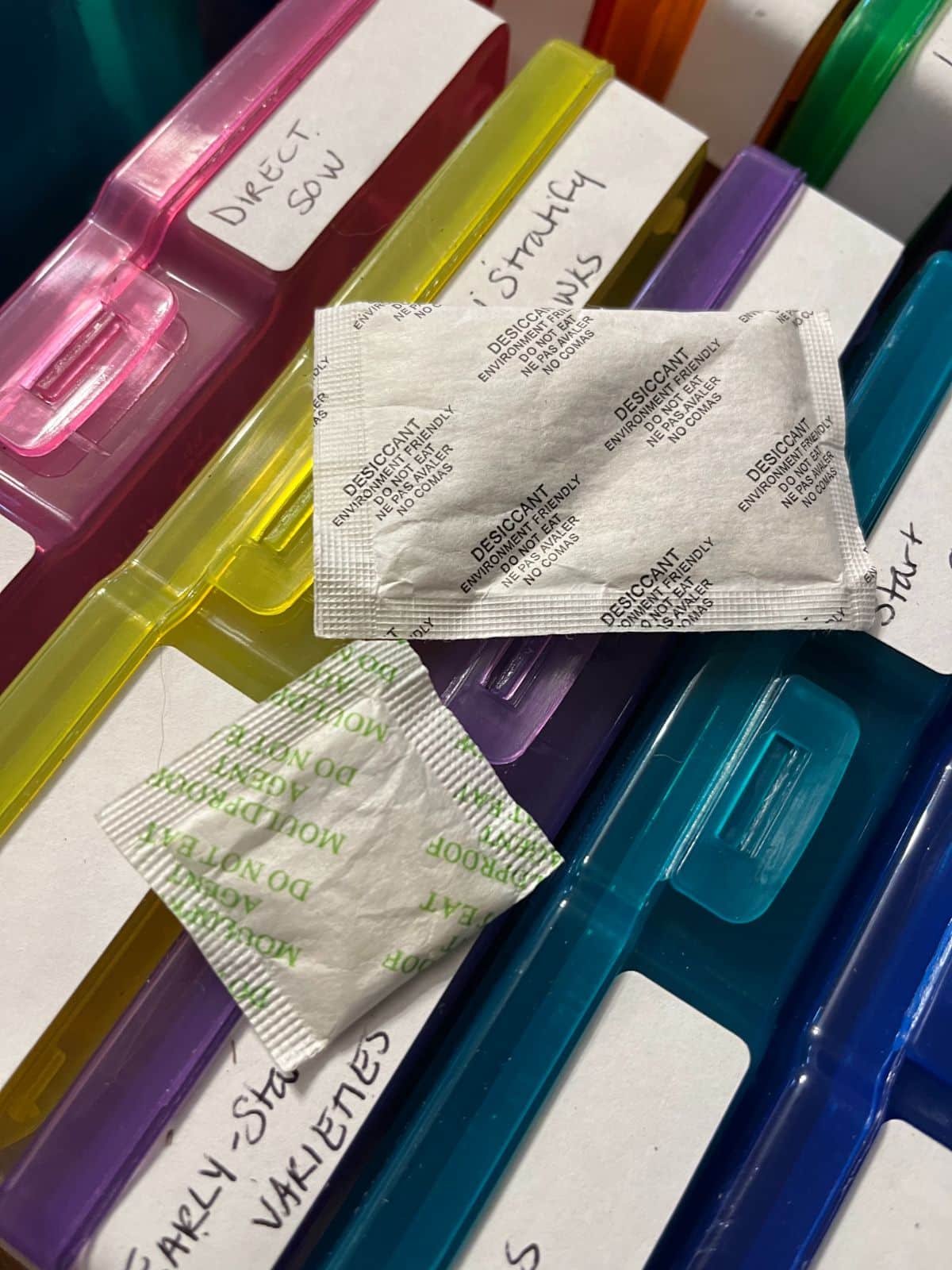
Moisture or humidity are one of the prime factors in decreased seed life. When you store your seeds, make sure they stay dry. This includes limiting exposure to humidity in the air. The plastic storage boxes do a good job of this.
You can further protect your seeds by putting desiccant packs or oxygen absorbers in the caddy with the boxes to absorb extra humidity. Desiccant packs like silica gel packs that come in boxes of shoes and clothing work well. Save the packs and toss them into the box with the cases. You can also use oxygen absorber packs sold for packaging with dehydrated foods.
Where to Keep Your Seed Storage Box

Keep your box of stored seeds in a cool, dry, dark place. Under a bed in a cool bedroom, in a dark closet, cabinet, or pantry are all good places. A cool basement or garage may be a good space to store your box of seeds, but only if it is not damp. Cool, dry, and dark are the keys to long seed life.
Well-organized, well-stored seeds will save you money over your gardening years. There’s no need to replace most types of seeds every year if you have a good storage system and keep them in favorable conditions. This will maximize your seeds’ life so you can get the most life out of your seeds.



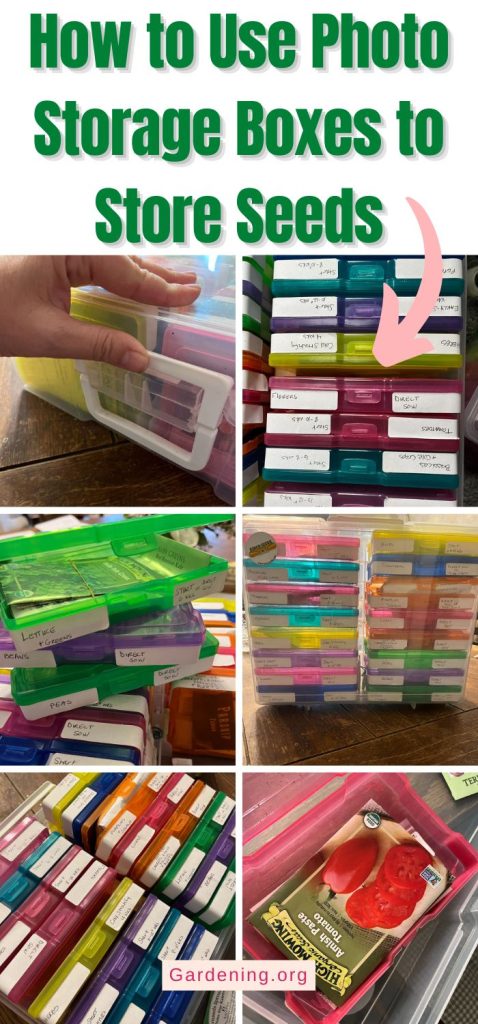
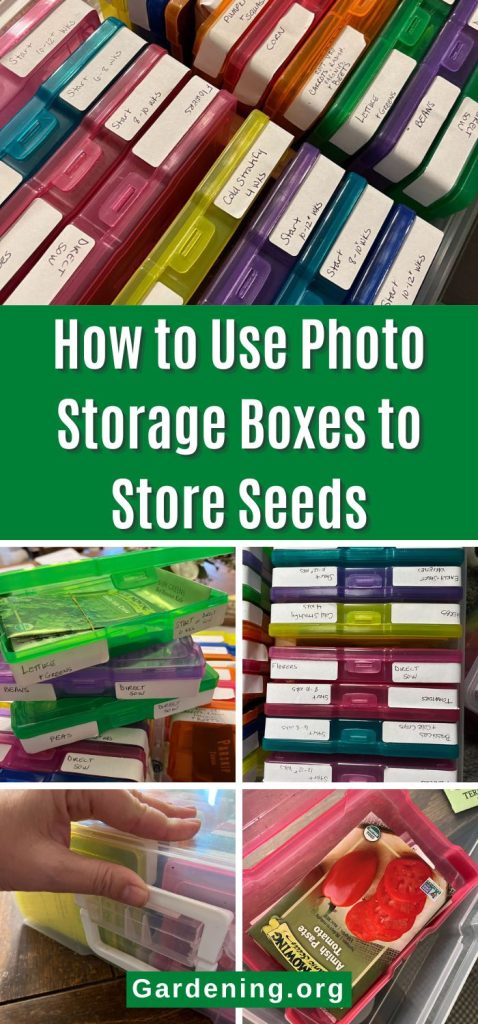
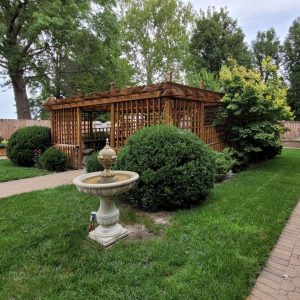
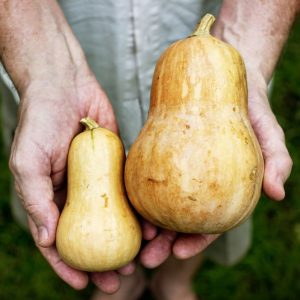
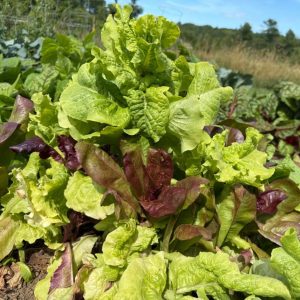
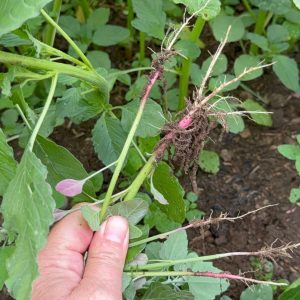
Peggy Werner
I just came across your great info from Pintrest. You have so many great ideas and help. My garden has not been doing well. Had to go to container gardening. My garden spot is nothing but a serious weed patch. I've lost my garden to it couple times. So hopefully this year will be better!
Mary Ward
I'm glad we can help! Container gardening has some great benefits. Though I would be tempted to try solarizing or smothering that garden bed to bring it back to something useful!
Tessa
Great idea for seed storage! I purchased one box and love it, as I have a very small patch. Works well for me. Thanks for the idea.